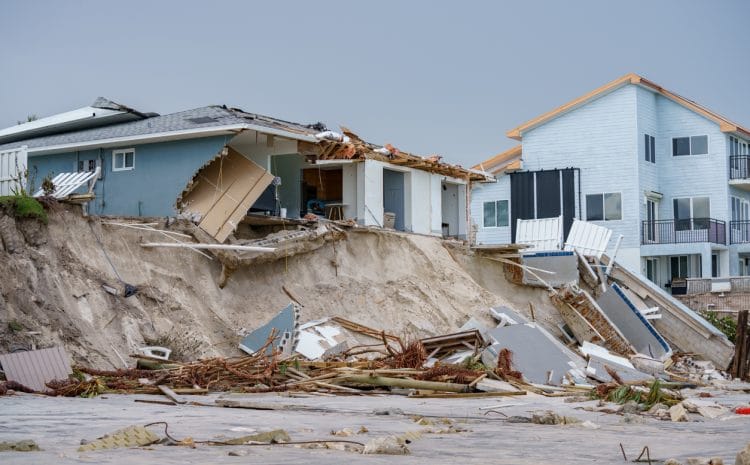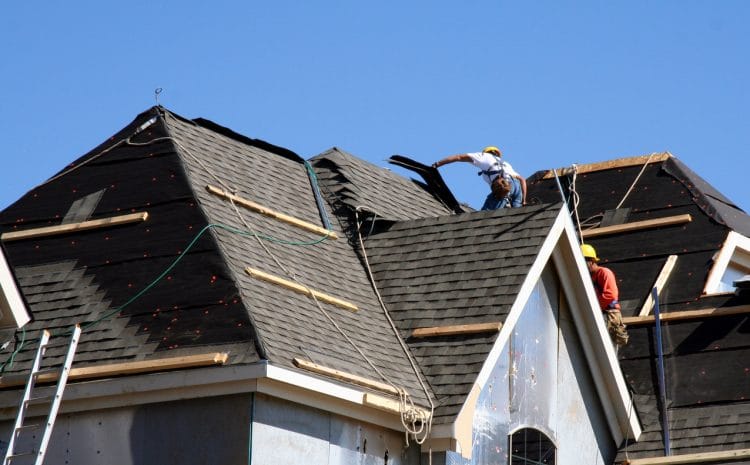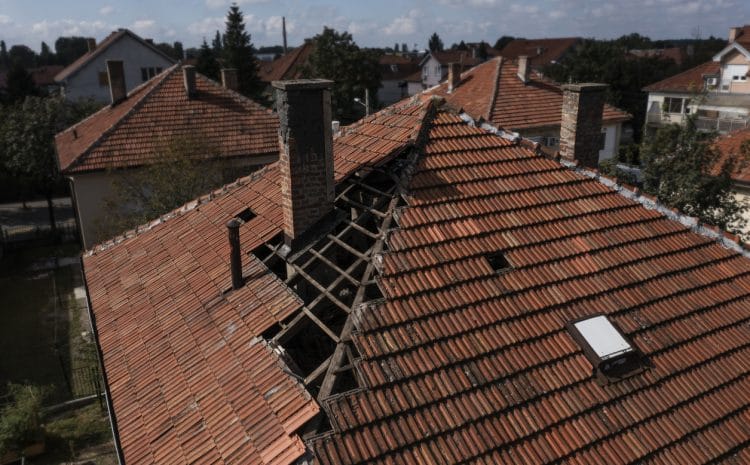Beginner’s Guide to Filing a Property Damage Insurance Claim – Checklist

When filing a property damage insurance claim, it’s essential to understand the claim settlement process to ensure a smooth experience. Following a comprehensive property damage claim checklist can help you secure the financial compensation needed to repair or rebuild your property effectively. Proper preparation and documentation are crucial for avoiding delays and maximizing your claim.
Before you begin, refer to our beginner’s guide, which includes a detailed property damage claim checklist to streamline the process. This guide ensures you have everything in place for a hassle-free claim, helping you restore your home with confidence and efficiency.
This informative guide will help you understand many things, including exclusion/inclusions of the policy, documentation of the damage, reporting the damage to the insurer, and more. This way, the property damage insurance claim process will become seamless for you. You won’t fail on any step whether it be documentation, on-time submission, or negotiation for the claim. Go through this useful guide to make every step of filing an insurance claim for property damage simpler. Let’s begin!
Property Damage Claim Checklist Is Here:
Step 1: Understand Your Insurance Policy
Understanding property damage insurance is essential to know what is covered and what is not covered. This information helps you prepare for the property damage insurance claim process in advance. Therefore, ask about policy terms, beneficiaries, inclusions/exclusions, deductibles, policy renewal, and the claim process from the insurer while buying a policy. Also, know the premium policy date so you do not miss paying the policy’s premium amount. You must regularly pay the premium otherwise, you won’t be entitled to claim coverage benefits when you truly need it.
Pay attention to the changed features, such as deductibles, sub-limits, and exclusions. Remember that these are essential payouts you need to pay to the company when the need for a property damage claim arises.
Additionally, choose the policy that offers comprehensive coverage benefits for property damage. It should encompass coverage for everything i.e. fire damage, earthquake damage, flood damage, mold growth damage, hurricane damage, etc.
Step 2: Document the Damage
A comprehensive collection of evidence before emergency repairs makes the claim settlement easier for the said damage. This will help ease your stress while organizing all evidence, documents, and paperwork for a stronger claim. Also, the detailed and clear evidence will help the insurance adjuster know how much you need for repairs and restorations. This way, you will get a massive payout benefit against the irreversible property damage to goods and structures.
So, take as many photographs as you can of the damaged site. If possible, make a 3D video of the damaged site to help the insurance adjuster understand how the aftermath of the catastrophic event looks. Then, prepare a property damage claim checklist of damaged items. Other than this, you should complete the paperwork. It should include receipts for the purchase of the property, receipts for emergency repairs, quotes from the contractors, a list of costs for damaged items and repairs, and additional expenses for temporary living arrangements.
Don’t rush while organizing documentation for the claim process. Remain calm, objective, and active in organizing documents effectively.
Step 3: Report the Damage to Your Insurance Company
Notify your insurance company promptly after reporting the event to the local administrative body. Know how your insurer listens to grievances/reports. These days, most insurance companies offer 24/7 claim service to their customers for reporting incidents. Choose any one option that is convenient and reliable for you. You may choose to report the event to the customer support center via the phone or simply send an email to notify the company. If an online reporting option is available, complete it quickly.
Most insurance companies include specific timeframes for reporting the incident in their clauses. Understanding the policy’s clause can help you in making an informed decision. Failing to inform the company on time is a major cause of the claim denial.
Also, make sure that you have successfully completed the initial step of the intimation. Provide essential details like policy number, date and time of the incident, and a description of what damage or loss happened.
Step 4: Work with an Adjuster
Once you report the unfortunate incident, your insurance company will assign an insurance adjuster for you. The adjuster schedules an inspection of your damaged property to evaluate the extent of loss. Based on the evaluation, the claim adjuster will present a report to the company for the claim settlement.
Hence, a little bit of preparation in advance before the claim adjuster’s visit can make a major difference. File necessary reports with the police or fire department before the contractor’s visit. Also, do not make immediate repairs before the adjuster’s visit. If it is very urgent, capture clear photos of the incident. When he arrives to inspect your property, hand over your inventory. This will help him understand the loss of goods. Furthermore, show him documents, evidence, and emergency repair receipts to make the claim request stronger.
During the meeting, you should be present. Your presence is important because you will help him understand the event and the resulting damage. Your goal should be to showcase the damaged areas, supported by the evidence. This way, the adjuster will know the extent of damage that has occurred to your property and belongings. The evidence, documents, and visible signs of damage will prepare a roadmap for him to evaluate the total cost for repair and restoration.
Step 5: Get Repair Estimates
After the adjuster’s visit, you must contact licensed contractors. The goal of this crucial step is to get estimates for repair from them. This will inform you whether or not the adjuster’s estimate for the repair or replacement of equipment is accurate. If you find the claim settlement offer is below the damage, you can deny it. Your gathered multiple estimates, supported by the documentation will help you negotiate with the insurer.
So, fight for your compensation effectively, and do not get ready for a low price when you should deserve more. Seek the help of a professional public adjuster. They are well-versed with the policy’s complex terms and can negotiate with the insurer for your rights. They aim to benefit you with the highest payout to restore or rebuild the damage. They will show the contractor’s quotes to the insurer to make a stronger claim process.
Step 6: Track Your Claim Progress
Once you have filed the claim application, you should follow up on your claim to ensure timely processing. This will force the insurer to verify documentation and paperwork faster. Otherwise, there is a huge possibility that the company will put a hold on your request and delay its processing for one year.
There are many methods to communicate with the insurer. You can call their support center to enquire or simply send an email. Besides this, you can check their online portal to track the progress. This will keep you informed. You will get updates about the latest developments. If there are questions and concerns, you can address them on time. Regular communication between you and the insurance company builds trust and clears the confusion if there is any.
Additionally, document the phone details, emails, and other interactions with the insurer. This will help you revise previous communication and claim assurance offers.
Step 7: Receive the Insurance Payout
Once the insurer verifies documentation, evidence, and the damaged property, the insurer initiates the insurance payout. It typically takes about 30 days to receive the insurance claim for home damage after the claim approval. If you find the payout is lower than you have expected you should seek legal help. Hire a lawyer or attorney for the property damage claim. They will review the policy and understand the whole incident. Show them your gathered evidence or documentation to support the statement. Be honest and truthful to them. They will help you file a lawsuit to fight for an adequate claim settlement offer.
Common Mistakes to Avoid When Filing a Property Damage Claim
Now that you have understood the property damage insurance claim tips. Here are some mistakes that you should avoid when filing a property damage claim:
- Make sure you have documented the loss or damage accurately to show the extent of damage
- Ensure you know the property damage insurance claim timeline. Submit documents within the deadline to prevent outright claim denial
- Gather quotes from different licensed contractors to get the real estimated value of the loss. Do not rely on the first repair estimate done by the insurance adjuster
- Understand policy’s exclusions carefully. Do not commit the mistake of asking for the claim benefit for exclusions.
Conclusion
Hopefully, this guide has provided you with valuable insights into filing a property damage claim. Following a well-structured property damage claim checklist is crucial for navigating the process efficiently. Collaborate closely with your insurance company, maintain open communication, and thoroughly document all damages. By working honestly with claim adjusters, you can increase your chances of achieving a fair and full settlement. However, be cautious of undervalued settlement offers.
If you feel the offer is inadequate or face difficulties, consider seeking legal advice or hiring a public adjuster. These professionals can help you maximize your coverage benefits and ensure you receive the compensation necessary to restore the damages caused by unforeseen incidents.
Staying informed, organized, and attentive is key throughout the claims process. A property damage claim checklist can help you stay on top of each step, from initial damage documentation to reviewing settlement offers. When evaluating settlement offers, have a discerning eye to ensure the payout adequately covers the costs to repair or rebuild your property.
By following a comprehensive property damage claim checklist and seeking expert assistance when needed, you can confidently navigate the claims process and secure the compensation you deserve to restore your property.
FAQs
- How do I file a property damage insurance claim?
Intimate the insurer about your property damage insurance claim ASAP, collaborate with the adjuster, showcase documents and evidence, complete the paperwork within the deadline, and negotiate with the insurer for a smooth property damage insurance claim.
- What documents do I need to file a property damage insurance claim?
Compile documents such as photos, repair estimates, insurance policy details, and emergency repair receipts in an organized manner.
- How long does it take to process a property damage insurance claim?
The property damage insurance claim process may take from a couple of weeks to several months to process. The timeline is not fixed. It varies depending on the complexity of the claim, legal issues, multiple parties, and the extent of the damage.
- Can I file a property damage claim online?
The answer is yes. Most insurers offer online claim submission through websites or mobile apps. You should visit the official website and click the online property damage claim option. Follow the on-screen instructions for the claim settlement.
- What should I do before the insurance adjuster arrives?
Do thorough and accurate documentation of the damage, supported by the evidence. Make temporary repairs to prevent further damage, create an exhaustive list of damaged items, and gather additional expense receipts like temporary accommodation. Handover all these things to the claim adjuster to help him understand the extent of damage/loss.
- Will my insurance rates go up if I file a property damage claim?
Filing a property damage claim makes you a high-risk policyholder. In such a situation, it is natural that the insurer will increase insurance rates in the future.
- What if my property damage claim is denied?
Contact a public adjuster or attorney for the reversal of the property damage claim denial. They will review the process and understand your pain points. Then, they will empower you with the best advice and negotiate with the insurer for prompt claim settlement approval.
- Can I make repairs before the insurance adjuster visits?
Avoid making repairs before the insurance adjuster visits. If there were emergency repairs, gather their receipts and include them in the documentation.
- How much will my deductible be for a property damage claim?
The deductible is not uniform for all insurance companies. It may vary based on the insurance company and the policy you have chosen. This is a fixed amount that a policyholder has to pay before the insurance company initiates the financial compensation against the damage.
- How do I track the status of my property damage insurance claim?
Most insurance companies have online portals to allow policyholders to track the status of their property damage insurance claims. Furthermore, keep all lines of communication open with the company to track the status of your property. Address questions and concerns to keep your claim settlement on track.



